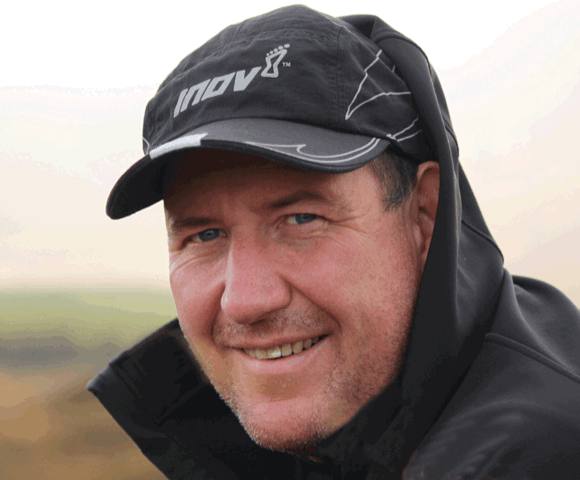ABCs of first aid
ABCs of first aid
Some basic first aid knowledge goes a long way in an emergency situation. Most people would know how to put a pad and pressure on a bleed and put a burn under cold running water.
The challenge for the first aider is to be able to use important first aid skills under pressure. The pressure is partly emotional as the casualty may well be a good friend or relative and partly intellectual, “Can I remember what I was told on my first aid course”.
In emergency you are usually taught a ‘system’ which will help you remember what to do under pressure. Most first aid systems are based on the first few the letters of the alphabet which are easy to remember under pressure. “As simple as ABC,……” In an outdoor situation it is important to remember that you may also be dealing with some safety issues as well asn first aid problems all at the same time.
Let’s think about the ABC’s of first aid –
Assess: Assessing the situation for danger – who is at risk, yourself and your friends, the group? In the outdoors the first priority is making sure you and no one else is injured, then making the accident scene safe. There’s no point in getting killed or injured before you can offer help.
Think about where you are – if you are under a crag you should put a helmet on. Ideally, you would never move a casualty, but depending on the situation it may be unavoidable. If the tide is coming in our first priority may be to carefully move the casualty to safety. If the accident scene has blood, or involves strangers then consider wearing vinyl gloves.
NOTE In the current Covid era it would be wise to wear gloves and a face covering/mask when doing first aid.
Alert response: Check the casualty for response. Asking questions like ‘How are you feeling?’ If they answer you know that the casualty is breathing and have a heartbeat, the next thing to do is check for bleeding. BUT If the casualty is not responding and unconscious there is more cause for concern. If they can’t be roused check their airway and breathing.
Airway: If the casualty is on their back then carefully tilting the head back and lifting their chin will establish an open airway and give them the opportunity to breath. If this does not restore an open airway, check for obstructions and remove any you find. A snowboarder who has wiped out on powder snow may not be breathing because they have a mouth full of powder snow. It you remove the powder they may well start breathing and you have jut saved their life. Opening an airway is probably the most important thing we can do for any casualty.
Breathing: Check for breathing by looking at the casualty’s chest and stomach to look for movement, also flaring of the nostrils. If the casualty is wearing lots of outdoor clothing, you may need to put your hand on their stomach to feel for their breathing. In the current Covid era we do not recommend bringing your face near the casualty’s mouth to see if you can feel breath on the side of your face.
Lack of breathing is likely to indicate cardiac arrest, which will necessitate a defibrillator, and medical help is required quickly. CPR is unlikely to start the casualty breathing but it may keep them alive until the emergency services arrive. To find out more about how to do CPR follow this link https://firstaidtrainingcooperative.co.uk/what-to-do-if-there-is-a-cardiac-arrest-in-the-crowd/ .
Circulation: The next priority for the casualty is managing any blood loss. Heavy blood loss once spotted can be stopped using pads, pressure and elevation. Large dressings are idea but don’t be afraid to improvise with absorbent gloves, fleeces or t-shirts.
Large bleeds often lead to shock with the symptoms of the casualty having rapid shallow breathing, becoming cold pale and clammy, and being worried and anxious. The treatment for shock is to raise legs, keep the casualty warm and seek medical help as soon as possible. If the casualty appears to be going into shock without evidence of external bleeding then suspect internal bleeding. This is often from a heavy fall or impact and is as dangerous as external bleeding, but harder to spot.
Discover Damage: Is there any other damage to the casualty? Potentially broken bones or any other signs of symptoms of injury or illness? For potential fractures try to immobilise these as best you can. Keep limbs as straight as possible and try not to move the casualty too much.
Recovery Position: If the casualty is conscious, we will make them as comfortable as possible in a position they are comfortable in. Extra clothing and group shelter are ideal for this. If the casualty is not conscious and they are not already on their side this involves moving them into the recovery position. This will give them a safe, stable, open, draining airway You can watch a video of how to put a casualty into the recovery position here; (https://www.youtube.com/watchv=7aiWlY6KKnE&list=PL_v8gOxjcjte0VaSRNlsE0Y_7tVQrf623&index=7).
Once you have managed the casualty go back to anyone else in your group and make sure they are alright. Makes sure they, and yourself, have some food and drink, and stay warm. Then now time to implement an emergency plan and get help.
You can also download a free ‘Outdoor First Aid’ manual which can be stored on your phone to use in an emergency, it only takes up the space of a couple of photo’s in your storage. Follow this link to download a copy of an Outdoor First Aid manual. (www.firstaidtrainingcooperative.co.uk/download-your-free-digital-first-aid-manual/ )
It is always recommended that you do a specific outdoor first aid course if you have not done one before. For more information about Outdoor First Aid courses click here . (https://firstaidtrainingcooperative.co.uk/outdoor/ )
About the author - Cory Jones has worked in the outdoor industry for over 30 years, and started running first aid training courses with the Red Cross in 2001. Since 2005 he has been delivering specialist outdoor/wilderness first aid courses. He shares his time between running Gairloch Canoe and Kayak Centre and now running his training company Outdoor First Aid Limited. Cory was a founder of the First Aid Training Co-operative.
Some important information about doing first aid in the Covid era -https://firstaidtrainingcooperative.co.uk/performing-first-aid-during-covid-19/


